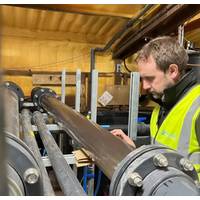
Project to Suck Carbon from the Sea Begins in UK
PML scientists and colleagues from the University of Exeter have commenced operation for the SeaCURE project pilot plant Weymouth, Dorset.The ocean currently absorbs around 25% of the CO₂ emitted each year by humans. SeaCURE’s approach seeks to enhance this capacity further by extracting CO₂ from seawater, thereby enabling further absorption of atmospheric CO₂.The process involves acidifying seawater to convert dissolved carbon into gaseous CO₂, which is then captured and stored. The treated water is subsequently rebalanced using alkaline substances before being returned to the marine environment.
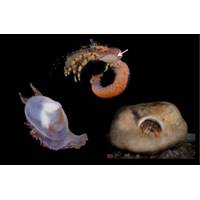
New Discoveries: Three Tiny Species Added to South Africa’s Spectacular Marine Life
species from South Africa emphasise the need for continued exploration. Each species described brings us one step closer to understanding our oceans’ rich biodiversity and finding new ways to protect it.The authorJannes Landschoff, Research Affiliate, Stellenbosch UniversityTatjana Baleta, a University of Exeter Wikimedia Fellow for Climate at the Global Systems Institute, was instrumental in producing the first draft submission of this article.(Source: The Conversation
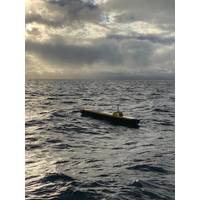
AutoNaut Completes a 16-week, 4,000-mile Mission on the Atlantic continental shelf break
after 115 days at sea. It had already had a year of environmental exposure ashore. In phase one a method to detect small ice in big waves was identified. Work continues ashore with IR video and machine learning to inform the existing collision avoidance system.Also in Phase 1, University of Exeter developed a pendulum motion energy harvester. This was not installed for the extension proving trial as Covid had prevented its further development. Other ways of providing hotel power such as a fuel cell were tested, and overheated in phase one, as well as state-of-the-art batteries
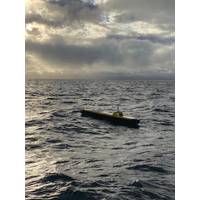
Case Study: Autonaut Put to the Test
after 115 days at sea. It had already had a year of environmental exposure ashore. In phase one a method to detect small ice in big waves was identified. Work continues ashore with IR video and machine learning to inform the existing collision avoidance system.Also in Phase 1, University of Exeter developed a pendulum motion energy harvester. This was not installed for the extension proving trial as Covid had prevented its further development. Other ways of providing hotel power such as a fuel cell were tested, and overheated in phase one, as well as state-of-the-art batteries
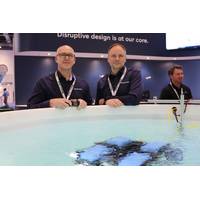
Oceanology ’22 Day 2: New Demands Drive Ocean Innovation
at, including operations via uncrewed surface vessels (USVs).Norway’s Kystdesign is designing a new work all electric work class ROV that will be USV-ready, like SMD’s Atom electric ROV, which got its first customer, Rovco, announced today via a LOI. L3Harris has been working with the University of Exeter through the ARISE project to optimise ROV operations from USVs while Heriot Watt University in Edinburgh has been focusing on building autonomy into ROVs, to make over the horizon operations easier, another conference session heard.Meanwhile, new breeds of vehicles are entering the market

Flotant Validates Dynamic Cable Concept for Floating Wind Projects
performance testing. Its objective is to improve cost-efficiency and increase robustness and flexibility in floating wind subsea design for deeper waters from 100 to 600 meters. Consortium partners Innosea, an AqualisBraemar LOC Group ASA (ABL Group) company, Hellenic Cables, ITA and University of Exeter have completed the dynamic cable scope of work.Hellenic Cables and ITA designed and engineered a novel braided armor to protect the cross-section of the dynamic cable.This included the application of an outer jacket made of carbon fibre reinforced composite, in addition to the development
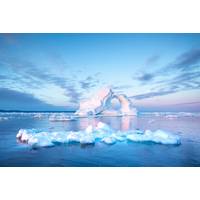
Arctic Sea Ice Lows Mark a New Polar Climate Regime
up to the end of the century. They used computer simulations in the analysis and assumed the world’s release of greenhouse gas emissions would continue at a high trajectory.Back in the Arctic Ocean aboard the Greenpeace Ship Arctic Sunrise research ship, biologist Kirsten Thompson of the University of Exeter said the new study was important in underlining “how fast and how profoundly the Arctic is changing.”For Thompson, that means big change for the region’s wildlife, from polar bears and insects to the whales she focuses on studying. “All their distributions are changing
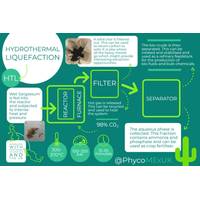
PML: Invasive Seaweed Finds New Role as Coastal Cleanup Hero
A research team, led by the University of Exeter and the University of Bath, has developed a cheap and simple way of creating biofuel and fertilizer from seaweed, aiding in its cleanup and the removal of plastic from tourist beaches in the Caribbean and Central America.The study, recently published in the Journal of Chemical Technology and Biotechnology, aims to remove invasive seaweed, like Sargassum, which is costly to cleanup and deters tourists, while also producing biofuel in a sustainable way. Professor Mike Allen of the University of Exeter and Plymouth Marine Lab explained the need for an
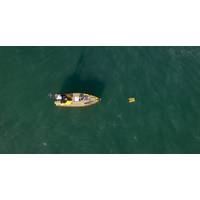
Deploying ROVs and AUVs from USVs
100% of its subsea inspection activities with unmanned systems by 2025, has been supporting UK-based USV manufacturer L3Harris UK on project called ARISE. It stands for Autonomous Robotic Intervention System for Extreme Maritime Environments, an Innovate UK part-funded project which involved the University of Exeter as an academic partner.James Cowles, Commercial Technical Sales Manager from L3Harris UK, says doing autonomous subsea inspection takes the “dull, dirty and dangerous” work off humans. Instead of having a 24m-long vessel with people on, “bouncing around”, a 7m-long

 February 2025
February 2025




